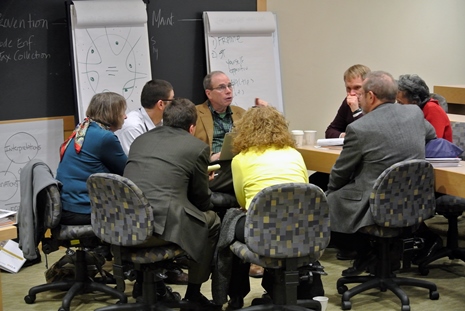Finding common ground in the fight against blight
May 20, 2014

 Originally posted on The Catalyst: Ideas and Insights from Living Cities
Originally posted on The Catalyst: Ideas and Insights from Living Cities
As a part of the Project on Municipal Innovation (PMI) – A network of Mayoral chiefs of staff and policy leaders from 35 of the country’s largest and most creative U.S. cities that Living Cities convenes biannually with the Ash Center at Harvard’s Kennedy School – we bring together innovators from the field to share models of municipal innovation. At last the last PMI convening, Tamar Shapiro, President and CEO, Center for Community Progress led a session on her organizations work with cities fighting blight.
A couple of months ago, we welcomed delegations from eight cities to our Community Progress Leadership Institute, a high-level training and leadership development program held at Harvard Law School.
In some ways, these cities could not have been more different: from Detroit, with more than 100,000 vacant properties, to Oklahoma City, an economically strong city that still struggles with entrenched blight in certain areas, and from Huntington, West Virginia with 50,000 residents to Milwaukee, Wisconsin, a city of 600,000.
But despite their differences, the three days we spent with our new friends from these communities reaffirmed a basic fact that my colleagues and I have long recognized: Blight is not just a problem confined to a handful of older, industrial cities in the Rust Belt.
What does this mean for us as a national organization working to combat blight and vacancy in a range of communities – large and small, urban and rural?
At Community Progress, we are acutely aware that solutions must be tailored to each local context. Particularly in a field where so much of what is possible – and what is not – is determined by widely differing state and local legal frameworks, the pitfalls of simply adopting another community’s best practices are very real. And yet, we are always looking for the common threads in approaches taken by our partner cities.
So what are some of the common elements that must be part of the development of a successful strategy to combat blight?
- Identifying the problem and the tools: Any response to blight must start with a thorough diagnosis. It is easy to know that there’s a problem – blight, after all, is highly visible. But it is important to dig deeper – to better understand the inventory of vacant and blighted properties and the existing authorities and tools. It is impossible to determine which tools may be missing without knowing which are available.
- Understanding the market context: A successful strategy must take into account local housing market conditions. They provide the context in which all anti-blight strategies operate and can determine which will be successful where. For example, on first blush, it might seem to make sense to impose high fines in those neighborhoods with particularly large numbers of code violations. But these neighborhoods are also likely to have a weak market and low housing values. Imposing fines under these conditions won’t have the transformative effect that is needed and may instead overburden the very homeowners who form the backbone of the neighborhoods. On the other hand, such penalties might be very effective in a stronger market, where bringing the few blighted properties into compliance could have great impact. Similarly, understanding market conditions can help a city determine where there is potential for redevelopment or instead the need to consider a long-term green reuse for vacant lots. Of course, markets are not immutable. In fact, much of our work is aimed at reviving local housing markets. But to do so, we first have to understand the market conditions as they exist.
- Working toward a shared vision: No strategy to reduce blight is likely to have sustained success without a strong vision, and no one can better determine that vision than the people living in the neighborhoods that are most deeply affected by blight and vacancy. But a vision is most valuable if it is realistically achievable. Local leaders must listen to community members to understand their aspirations and concerns and, at the same time, share data that can help inform that vision. With data in hand, community leaders and residents can craft a meaningful vision to guide local decision-making.
Last summer, Community Progress brought a group of city and community leaders from New Orleans to Pittsburgh for a peer exchange on how to use market data to develop neighborhood stabilization and revitalization strategies.
As we drove along the sharp dividing line between such communities as Homewood and Point Breeze, members of the group commented on the stark contrast between neighborhoods that were mere minutes, yet worlds apart. The evident power of divergent local market conditions, created by decades of disinvestment, to continue to shape these neighborhoods was sobering. And yet the trip was also inspiring, as we listened to City officials and community leaders describe how they had come together around data, developed a common understanding of market constraints and possibilities, and crafted carefully tailored solutions were helping to achieve each neighborhood’s individual vision.

Earlier this month, I spent several days in Flint, Michigan, a much smaller city facing very different market and demographic realities than Pittsburgh. Nonetheless, I witnessed similarly strong partnerships between the City, community leaders, and other stakeholders, as they worked together to identify their challenges, understand local market conditions, and develop clear neighborhood visions for the City’s recently completed master plan. I was reminded yet again of the power of the three simple lessons above and their relevance across so many different cities.
Just two days ago, we announced the results of our first competitive Technical Assistance Scholarship Program (TASP), a new program that provides subsidized technical assistance to communities that seek innovative solutions to the challenges of blight and vacancy.
We were thrilled to select the cities of Atlanta, Georgia, Butte-Silver Bow, Montana, and Lafayette Louisiana in this first round – a selection that reaffirms that blight affects communities of all sizes and geographies. As we start our work in these very different communities, we will once again be looking for – and I’ve little doubt that we’ll find – common threads to share with our partners around the country.
Tamar Shapiro is the President and CEO for the Center for Community Progress.
Subscribe to join 14,000 community development leaders getting the latest resources from top experts on vacant property revitalization.
